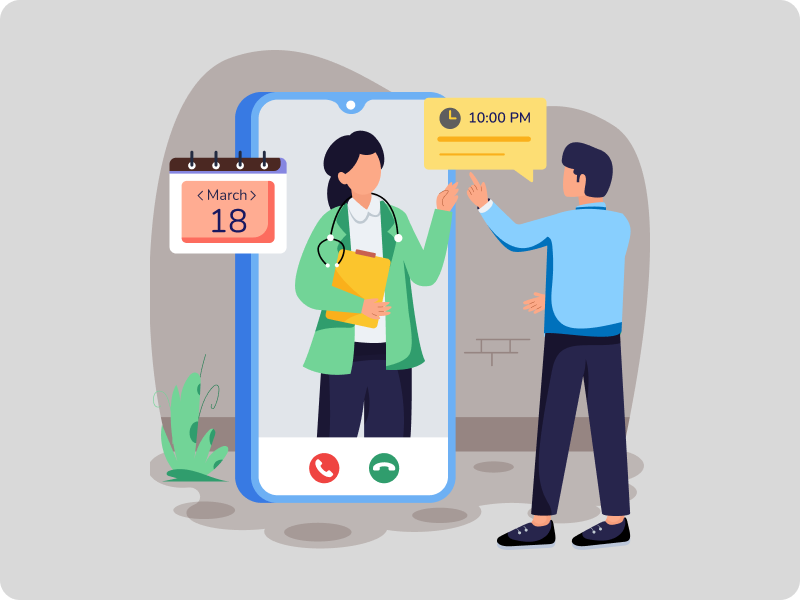Your Patients Deserve to Be Heard: Optimizing
IVR for Enhanced Patient Communication
In today’s fast-paced healthcare environment, effective communication is key to delivering exceptional patient care.
Patients want to feel heard, valued and supported throughout their healthcare journey. One powerful tool that can
help achieve this is Interactive Voice Response (IVR). When optimized, IVR systems can enhance patient communication,
streamline operations and improve overall satisfaction.
In this blog, we’ll explore how healthcare providers can optimize IVR systems to ensure their patients feel heard and
supported, while also improving efficiency and reducing costs.
The Role of IVR in Patient Communication
Interactive Voice Response (IVR) is an automated telephonic system that interacts with callers, gathers information,
and routes calls to the appropriate recipient. In healthcare, IVR is commonly used for appointment scheduling,
prescription refills, patient reminders and more.
However, IVR is often underutilized or poorly designed, leading to frustrating experiences for patients. By optimizing
your IVR system, you can transform it into a powerful tool for enhancing patient communication and satisfaction.
Benefits of Optimizing IVR for Patient Communication
- Improved Patient Experience: A well-designed IVR system provides patients with quick and easy
access to information and services, reducing wait times and frustration.
- Enhanced Accessibility: IVR systems operate 24/7, allowing patients to access services outside
of office hours—ideal for busy schedules or different time zones.
- Streamlined Operations: Automating tasks like appointment scheduling and prescription refills
frees up staff, improving overall efficiency.
- Personalized Communication: Integrating IVR with Electronic Medical Records (EMRs) enables
personalized responses based on a patient’s history.
- Reduced No-Show Rates: Automated appointment reminders help minimize no-shows, ensuring
patients receive the care they need.
How to Optimize Your IVR System for Enhanced Patient Communication
1. Simplify the Menu Structure
A complex or confusing IVR menu can frustrate patients and lead to abandoned calls. Keep the menu structure simple
and intuitive with clear options that guide patients efficiently.
2. Use Natural Language Processing (NLP)
NLP allows patients to interact with the IVR system using natural language rather than predefined options. This
makes the system more user-friendly and reduces frustration.
3. Provide Personalized Responses
Integrate your IVR system with your EMR to provide personalized responses based on the patient’s medical history and preferences. For
example, a patient calling for test results can receive tailored information without speaking to a nurse.
4. Offer Multiple Language Options
To cater to a diverse patient population, offer multiple language options in your IVR system. This ensures all
patients feel heard and supported.
5. Enable Callback Options
Long wait times can lead to frustration and abandoned calls. Offer a callback option that allows patients to retain
their place in the queue without staying on hold.
6. Send Automated Reminders and Notifications
Use your IVR system to send automated reminders for appointments, medication refills and follow-up care. This
helps patients stay on top of their health and reduces no-show rates.
7. Gather Patient Feedback
Use your IVR system to analyze the tone of the caller and gather feedback. This provides valuable insights into
areas for improvement and shows patients that their opinions matter.
8. Ensure Data Security and Compliance
Protecting patient data is paramount. Ensure that your IVR system complies with regulations like HIPAA and GDPR,
and implement robust security measures to safeguard patient information.
Conclusion
Your patients deserve to be heard and an optimized IVR system can help achieve this. By simplifying the menu
structure, providing personalized responses and offering convenient features like callback options and automated
reminders, you can enhance patient communication and satisfaction.
In an increasingly digital world, optimizing your IVR system is not just a convenience—it’s a necessity for
delivering exceptional patient care. Ready to enhance your patient care? Explore
JGDHealth now!




